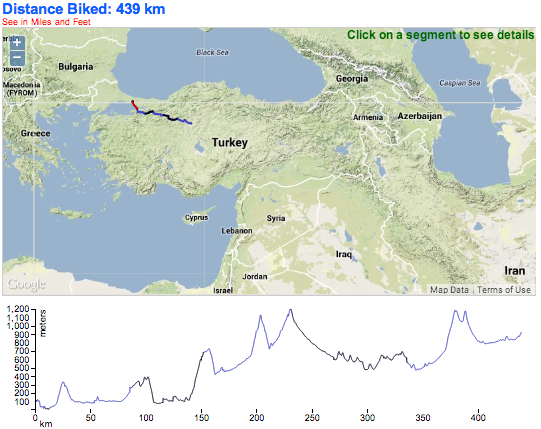We are about to bike into a water-stressed region of the world.
The following map shows the ratio of water withdrawals to a country’s total available renewable water resources, as calculated by the Pacific Institute. That is, it shows how much water people extract in a given year divided by how much water is replenished by rivers and rainfall. Note that some countries, such as those in the Middle East, are “mining groundwater,” and thus extracting much more water than is sustainable (the ratio is bigger than 1).
Azerbaijan, where we are now, is an arid country that uses more than half of its water resources. And soon we’ll be in Central Asia, riding across Kazakhstan and Uzbekistan, which are siphoning off most of the water that would normally flow into the Aral Sea. This area is second only to northern Africa and the Arabian peninsula for unsustainable water withdrawals.
Note that “withdrawal” is different than “consumption.” Some water that is withdrawn is returned to rivers and water tables. If the water is well treated (at a wastewater treatment plant, for instance) and returned to a river or water table, it can be withdrawn again further downstream. There are many ways to measure water stress, and the map below is just one. For my favorite maps of water stress, visit WRI’s Aqueduct maps.
We’ll report more as we visit the Aral Sea and cross this region.








